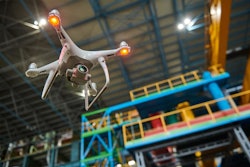
Restaurant brands will continue to rely upon new delivery channels to fuel growth
Restaurant brands, both large and small, had to be extra creative in order to survive during the COVID-19 pandemic. Facing challenges due to changing rules and regulations, from closing entirely to outdoor or take out only, the boomerang effect forced management to rethink how to serve as many customers as possible while maintaining the food quality and customer experience they worked so hard to build. In order to meet customer demand and keep the lights on, restaurants relied heavily on food delivery apps, including UberEats, PostMates and Grubhub, which were already hitting their stride pre-pandemic. I anticipate that next year, as life slowly goes back to normal, these food delivery apps will continue to be an important channel for restaurant owners. Another restaurant trend that started to take off in 2019 is ghost kitchens. Next year I believe we’ll see the explosive growth of these ghost kitchens, which allow owners to offer a variety of menu items on a very small scale and with minimal overhead. This economical approach to providing complete meals via pick up or delivery only will grow even more popular and will allow restaurant brands to reach an entirely new generation of customers who are used to ordering online and are open to new dining experiences.
AI will drive more sustainability throughout the food supply chain
Artificial Intelligence will make a big impact on the efforts to create more sustainable global food supply chains next year. Restaurant and grocery brands will be able to leverage AI to forecast based on customer demand, leading to less over-ordering and less food waste to support sustainability initiatives. I also predict the use cases for AI will expand beyond predictive planning, with brands leveraging it to create incident risk management models to identify trends and challenges in the supply chain to determine whether bad or recalled products are originating from a specific supplier, distributor or due to an environmental variable. AI will become invaluable at identifying the trends impacting the supply chain and food quality to provide the insight needed to avoid the same incidents from repeating over and over again.
Technology, standards and data will become critical to managing the global food supply chain
As the supply chain became more complex, with global suppliers and distributors working together to deliver fruits, vegetables, and more, from around the world, the ability to track and trace, and monitor the journey of the ingredients in our meals also grew more complicated. While technology has played an important role in managing restaurant operations and supply chain in recent years, it will play an even more important role in 2021. The need to meet an increasing number of standards, including Dodd-Frank, the Food Safety Modernization Act (FSMA) and the FDA’s New Era of Smarter Food Safety Blueprint, will require innovative technology-driven solutions for compliance. As a result, we’ll see an accelerated movement towards creating data standards for exchanging Critical Tracking Events and Key Data Elements, which are required for record-keeping and will allow brands, and their web of suppliers and distributors, to share the meta-data needed to provide better insight for food quality and regulatory compliance. The use of advanced technologies – such as IoT and blockchain – to support these new data standards will help solve the problems brands and their partners face as the global supply chain and the logistics of shipping products from around the world continues to grow more complex next year and beyond.


















